In 2012, we spent 2 months in Tibet, in connection with which I often hear: “Oh, cool, and how is it?” It is in this formulation that it sounds from the lips of my peers-friends, relatives of different ages from young to old, from the lips of many of my thousands of subscribers ... And I always fall into a dull stupor, not knowing how to answer, looking at the enthusiastic faces of the listeners, for some reason, they do not have the slightest idea (even at the top) about what Tibet really is and how it is there ...
In short, it's bad. It's very bad there. It's unbearably bad. I will try to tell everything here as it is, as I understand it, referring, if possible, to sources and opinions of authoritative historians and political scientists. This is not a short story, it is several millennia long, although the history of Tibet reached a special concentration, like all world history, in the 20th century, containing so much human suffering over the past 60 years that it would be enough for several centuries ...
« We have failed to protect our country, and soon the time will come when the Dalai Lama and the Panchen Lama will be destroyed and the country of Tibet will lose its face. Monks and nuns will disappear, monasteries will be destroyed […]. Officials, clerics, believers and laity will see their property confiscated. They will serve their enemies like slaves or become beggars in their own country. Their life of constant fear will become unbearable; days and nights will pass in misery».
From the will of the thirteenth Dalai Lama, 1931
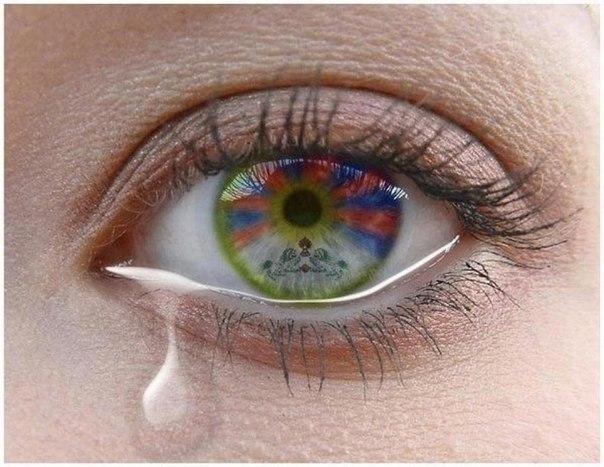
The words of the predecessor of the current Dalai Lama XIV, written 30 years before the events that will be discussed here, have almost completely come true today.
Today, Tibet is a territory occupied by China, where Tibetans, deprived of most rights and freedoms, live in their native land, like uninvited guests. During the 60 years of Chinese occupation, Tibet has lost 2/3 of its ancestral territories; 1 million (1/6 of the total population) Tibetans died during the conquest or later in Chinese prisons; about 200,000 Tibetans live in exile - scattered around the world, they may never see their homeland again; 6000 monasteries (all but 13) were destroyed to the ground during the "cultural revolution", 90% of the clergy were imprisoned. Tibetans do not have the right to run a household the way they have done it for thousands of years, to speak their native language, to practice their religion, forced cases of sterilization of Tibetan women have been recorded ... All over the world, except for China, only one definition has been found for this: GENOCIDE.
When people ask me about Tibet, many people mean by it still an independent country, someone is sure that Tibet has always been a part of China, someone even thinks that Tibet and Nepal are one and the same. Someone, not knowing a single reliable fact about Tibet, believes Chinese articles, which say that Tibet had a cruel slave system before the Chinese invasion, and someone says that Tibetans are terrible nationalists and kill visiting foreigners. I personally heard all this from different mouths. And all this has nothing to do with reality.
What is really going on there? Let's figure it out.
The name "Tibet" in different cases means the geographical, ethnic, cultural, historical space or territories occupied by modern Tibet. All these spaces are not identical to each other. Although the ethnic and cultural space of Tibet has now decreased, it still has an area of about 3,800,000 square kilometers, on which a little more than 6 million Tibetans live. Thus, Tibet is more than 1/3 of the area of modern China (with the area of the latter 9,600,000 sq. km., but its population is only 0.46% of the total population of China).
This was historical Tibet until the 60s of the XX century. At present, Tibet (in Chinese Xizang, which translates as "House in which the wealth of the West is stored") is an autonomous region of China (established in 1965) with the capital city of Lhasa and covers an area of 1,200,000 square kilometers.
Thus, the Tibet Autonomous Region (TAR) - only a third of the historical areas of Tibet - is now the place that can be conditionally called Tibet at the official (political) level. The remaining large territories are now completely ceded to China, although the Tibetans still inhabit these lands.

The state of Tibet appeared on the historical arena in the 7th century AD. and literally a century later it already controlled a vast territory from the northern borders of Central Asia to China.
Over the centuries, the position of Tibet has changed repeatedly from dominant to vassal. At some periods in history it became a dependent country, but never became an integral part of the Chinese Tang and Ming empires, the Mongol Yuan empire, or the Manchu Qing empire. Vassal relations meant only that the emperor defended Tibet at his request from dangers, helped in organizing and governing the country. But there was no provincial administration there, the typical “vertical of control” of China did not extend to Tibet, the Dalai Lamas had not only spiritual, but also secular power ( Kychanov E.I., Melnichenko B.N. The history of Tibet from ancient times to the present day. M .: Vost. lit., 2005.)
In 1913 (shortly after the fall of the Qing dynasty and the collapse of the Manchu empire, which included China), documents on independence (from vassal relations with the Qing empire) were published, and then for almost 40 years the Tibetan government exercised full power.
The famous Potala Palace is the residence of the Dalai Lama in Lhasa, the capital of Tibet.
Tibet possessed the necessary attributes of a state: administrative apparatus, army, legal system, taxation, telegraph, post office, currency, economic self-sufficiency, minted coins, printed paper money and stamps. The first delegation of Tibetans to the West in 1947 held Tibetan passports, which were recognized by all the countries they visited.
After the revolution in China, the overthrow of the Manchu dynasty and the formation of the Republic of China, the latter begins to lay claim to the countries that were dependent on the Qing. But officially the Republic of China (as well as the PRC itself later) did not proclaim itself the successor of the Qing dynasty. And the further "return" of the lands occurred solely due to China's military superiority over its weak neighbors.
Still militarily weak, Tibet, which did not want to submit to Beijing, in fact had to choose between Russia and Great Britain. Like Mongolia, Tibet is turning to Russia for support. But this was prevented by Eurocentric, primarily pro-British, forces in Russia. And Tibet falls into the sphere of influence of Great Britain. But the latter did nothing to ensure that Tibet was internationally recognized as an independent state. Moreover, even earlier, behind the backs of the Tibetans, Great Britain recognized the suzerainty over them of the Qing Empire. And Mongolia, which found itself in almost the same position in the sphere of influence of the Russian Empire, received assistance in establishing independence. The British colonial policy had far-reaching consequences for Tibet.
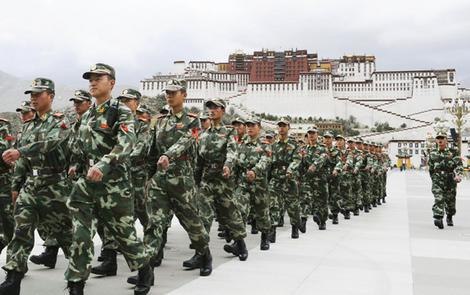
After the death of the thirteenth Dalai Lama, the Chinese again openly declare their interests in Tibet. In Lhasa, with the consent of the Tibetan government, an English representation is opened, which helps to balance the forces. But after the end of the Second World War, the British leave Tibet in 1947, and in 1949 the Communists come to power in China.
For the new Chinese government, Tibet became only a part of China, and it was announced on Chinese radio that Tibet was to be "liberated from the yoke of British imperialism." The UK is completely withdrawn. And the USSR at that time was moving closer to its red brother, and as a result, it recognized China's dominance over Tibet.
Since January 1950, the People's Liberation Army of China has been advancing towards the eastern borders of Tibet. The Tibetan government could not adequately respond to the invasion. The new Dalai Lama was then 15 years old. There was no unity at the top of the government: there was a split into those who sympathized and condemned Chinese policy. The army lacked trained soldiers.
The army of the Chinese "liberators" marches in Lhasa - the capital of Tibet
In October of the same year, the 40,000th People's Liberation Army took the city of Chamdo. 8,000 Tibetan soldiers were killed. The road to Central Tibet was open. During this period, only India supported Tibet and protested against the invasion of Chinese troops, the rest of the countries forgot about Tibet, switching to Korea. [Pommare, F.]
Unable to resist the Chinese onslaught, in April 1951 the Tibetan government sent a delegation to Beijing to negotiate. On May 23, the Tibetan delegation is forced to sign the "Treaty of Seventeen Points for the Peaceful Liberation of Tibet", not even being allowed to consult with Lhasa about its terms. The first clause of the agreement stated that the Tibetan people were returning to their family, the People's Republic of China...
In the autumn of 1951, the PLA entered Lhasa with red banners and portraits of Mao Zedong. For several years after the invasion of Tibet, the Chinese behaved decently enough. Some representatives of the nobility went over to the side of China. Schools and hospitals were built much more than before. But at the same time, the PLA garrisons were located throughout Tibet and actually "locked the country to the castle." The roads between China and Tibet, built in 1954, made it easier for troops to move from one end to the other.

If the agreement is imposed by a state whose superior military forces have occupied the "victim state", or the latter is in the process of occupation, or under its threat in violation of international law - such an agreement is in fact null and void. . According to Art. 52 of the Vienna Convention on International Contract Law, treaties and similar agreements concluded under the action of force or under the threat of its use are invalid from the outset. According to the conclusion of the UN International Law Commission, from the point of view of the current law, "an agreement obtained by an unlawful threat or use of force is not valid."
The 17-point agreement was signed under the conditions of aggression, which began with the occupation of Tibet, and under pressure. This is consistent with the clauses of the Agreement - especially those that imply its "internal" status and provide for military occupation.
Chinese Official Celebration of "Peaceful Liberation" Day of Tibet
It was said openly that the PRC would take control of all of Tibet, threatening an immediate offensive against Lhasa if the Chinese terms were not accepted. [Kuzmin, S. L.] The Dalai Lama and his government have not ratified this Agreement.
If a treaty is obtained under the threat of force, the “victim state” is never deprived of the right to declare it invalid. This is what the Dalai Lama and other Tibetan officials did after the emigration, when they were able to openly express their position.
Meanwhile, communist reforms began in Lhasa. The monasteries were gradually emptying, and the Tibetans finally began to understand that they did not have the slightest right to vote, that everything had already been decided for them. In 1956, the Preparatory Commission for the Establishment of the Tibet Autonomous Region was established. The result of the commission's activities was the creation in 1965 of the Tibet Autonomous Region (TAR). Power in Tibet now belonged to China.
Exhausted by Chinese reforms, attacks on religion and the need to feed the troops, the Tibetans from Amdo and Kam rebelled in 1955. Even the monks had to take up arms. A guerrilla war began against the Chinese. Dissatisfied with the influence exerted by China on Korea, the United States remembers the Tibetans and begins to supply weapons.
In 1956, Beijing sent 150,000 troops to Kam, supported from the air by aircraft. The Tibetans were defeated from the air, and the Chinese again defeated the inhabitants of Kham in a bloody struggle. Repressions began against the clergy, the villages were devastated.
The tension built up at breakneck speed. Thousands of people from Eastern Tibet flocked to Lhasa with the terrible news. On March 20 and 22, 1959, bloody and unequal battles took place in Lhasa - the Chinese brought tanks into the city. Having received information about the plans of the Chinese in advance, the Dalai Lama and his entourage, supported by the Khampa warriors, fled to India.
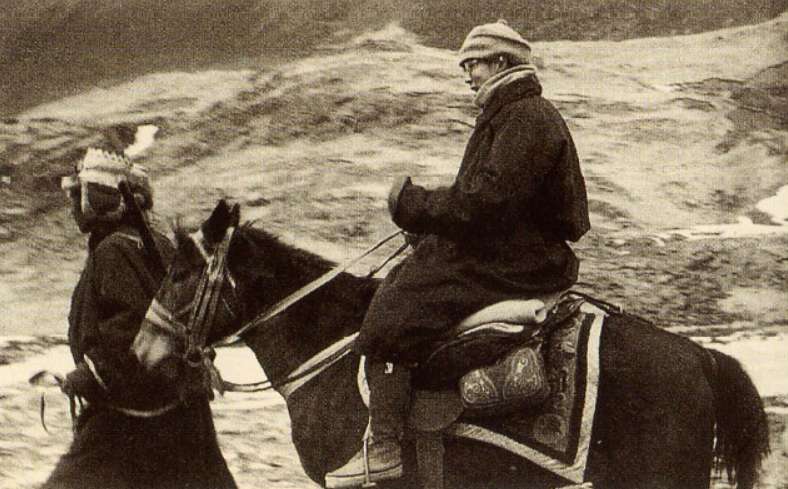
According to some reports, between 2,000 and 10,000 Tibetans died in the fighting; 4,000 people were taken prisoner. Between 1959 and 1960, almost 80,000 Tibetans, frightened by the repression, could not stand the regime and left the country, finding refuge in India and Nepal.
The UN condemned China's policy towards Tibet. The Indian government provided substantial material support to the Tibetans who settled in India. The Dalai Lama was given a residence near Dharamsala (Himachal Pradesh), a small town in the foothills of the Himalayas. In 1960, the Migration Government of Tibet was formed, which, with the help of the Indian government and thanks to international support, began to arrange the life of Tibetans in exile: Tibetan administrative institutions, villages, monasteries, libraries, and archives began to appear in India.
The 14th Dalai Lama fleeing occupied Tibet in 1959
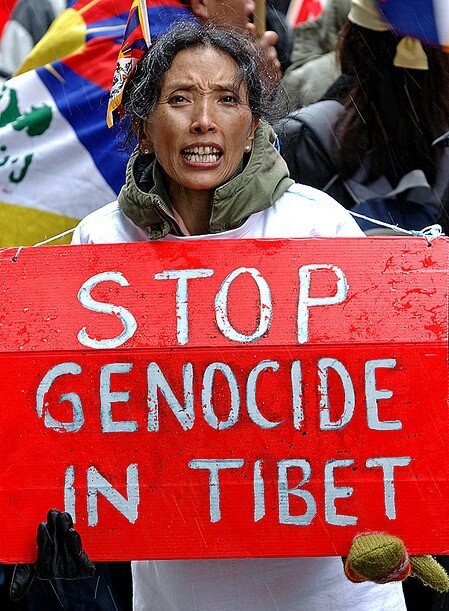
Since 1959, the national Tibetan culture began to gradually collapse. The years following the Dalai Lama's flight were horrific for the Tibetans. Bloody repressions, intensified communist propaganda, distribution of land and pastures to the “working masses”, public trials of infidels, destruction of monasteries, looting of works of art and their export to China. It is necessary to "destroy the Tibetan reactionary forces" and "liberate the slaves," the Chinese said. "Democratic reform" was carried out in Tibet in 1961. Hunger and disease reigned all around. Families and religious communities disintegrated, roundups of "counter-revolutionaries" and "reactionaries" became systematic. The undesirable were sent to forced labor camps, where they died from overwork. The actual number of prisoners who died in the camps is unknown, although some put the figure at 70,000. [Pommare, F.]
The Cultural Revolution that broke out in China in 1966 exacerbated the plight of the Tibetans. Monasteries, palaces, books, statues, paintings, stupas were swept away from the face of the earth. Denunciations flourished in the country, objectionables were tortured. The Cultural Revolution affected all parts of Tibet, even remote Western Tibet; ancient monuments were destroyed and looted. The monasteries that survived during the invasion of the early 1950s were called "hotbeds of reactionism and superstition"; they were deliberately destroyed, objects of worship were destroyed. Works of art made of precious metals were sent to Beijing to be melted down. Of the 6,000 temples and monasteries that existed in Tibet before 1959, by 1976 almost none remained. Some Tibetans, trying to save national cultural values, hid statues and books in their homes, sometimes buried them, disguised temples as sheds.
The government killed or imprisoned 93% of all members of the clergy, many of whom were also tortured.
Tibetans call for an end to the genocide in their country
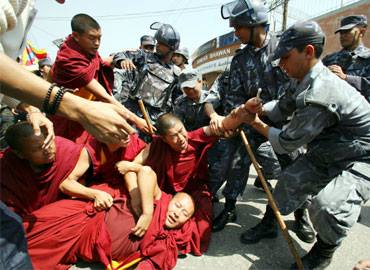
Since 1969, communes (collective farms) began to be created, by 1975 collectivization had already ended. Private property no longer existed. Instead of the traditional cultivation of barley, wheat was ordered to be cultivated. Other branches of agriculture were forgotten. Hunger has begun.
In 1975, the Chinese government began resettling Han Chinese in central Tibet. Amdo and part of Kama became part of the Chinese provinces of Gansu, Qinghai, Sichuan and Yunnan. Thousands of Chinese arrived in Tibet for permanent residence (the government rewarded and still rewards migrants with generous subsidies).
The period of Mao's rule is the purposeful destruction of the Tibetan religion, culture and way of life, the extermination or "re-education" of their carriers, the forced sinicization of the people. According to various estimates, from 5 to 30% of Tibetans died in Greater Tibet, and more than 100,000 became refugees. This falls under the UN Convention for the Prevention of Genocide.
Chinese "law enforcement" forces arrest Tibetan monks
After the death of Mao, a short period of "thaw" began, but soon the restoration reforms were curtailed, and everything returned to its former course.
The Dalai Lama no longer sought the complete independence of Tibet, but advocated an autonomous Tibet within China, demanded that China respect human rights and stop the resettlement of Chinese in Tibet, stop the disposal of nuclear waste in the country and create a peace zone here. However, the Chinese still rejected all the demands of the Dalai Lama.
Despite the fact that the Dalai Lama failed to achieve positive results, the world community appreciated his work, and in 1989 he was awarded the Nobel Peace Prize for his non-violent struggle for the freedom of his country.

China's economic policy towards Tibet turned out to be essentially colonial, since the results of the exploitation of Tibetan natural resources were intended primarily for the Chinese, and not for the Tibetans. For forty years, the area of forests in Tibet has decreased from 25.2 million to 13.7 million hectares; 18 million cubic meters of timber was exported from Southeast Tibet to China. More than 70 types of minerals have been discovered in Tibet, and mining is gaining momentum. Since the country was originally sparsely populated, the influx of immigrants here has exposed the established ecosystem (already disturbed by deforestation, depletion and erosion of soils, the extermination of some animal species and the disposal of radioactive waste in northern Tibet) to additional danger.
The most significant environmental impact of the Chinese has been the depletion of highland pastures, devastating large areas previously habitable for both wild and domestic animals. Traditional Tibetan pastoralism is under threat of extinction.
Damming sacred rivers destroys Tibet's ecosystem
Today, little has changed. China's influence on Tibet sometimes reaches absurd situations: for example, the Communist Party is trying to take control of the process of incarnation of lamas. Where neither terror nor ideology helped, the Chinese government decided to act with the help of the mass resettlement of the Chinese. Now the Tibetans living in Lhasa are a minority. Once the capital of the majestic Tibet is built up with high-rise buildings and shopping centers, and the Tibetans inhabit a kind of ghetto - a small Tibetan quarter.

In 2008, the Beijing Olympics brought China's political situation to international attention and gave Tibetans a chance to be heard. Beginning in March 2008, a wave of protests swept through the Tibetan regions. Hundreds of monks and lay people took to the streets demanding the return of His Holiness the Dalai Lama and the freedom of Tibet. In response, Chinese police dispersed the crowd with tear gas and opened fire on unarmed protesters.
The protests were followed by mass arrests of those suspected of participating in and organizing demonstrations, and in some regions authorities searched houses and monasteries. More than a hundred people who died during protests or after arrests have been identified. Thousands of people were arrested, interrogated, beaten and tortured. Most of them were released after a few months, but many received sentences ranging from three years in prison to the death penalty.
The tales of Chinese authorities' inhuman brutality have sparked outrage in the Tibetan diaspora and the world community, as well as piqued the interest of the independent media. However, the people of China received a completely distorted version of events.
Dispersal of peaceful Tibetan protesters by Chinese police
The Chinese media, designed to serve as agents of the will of the authorities, presented the Tibetans as militant and dangerous rebels, threatening the unity of the Chinese nation and the sovereignty of the state. Not a word was said about the victims of the bloody protests, arrests and imprisonment, but footage of individual burnings of several cars and Chinese shops by Tibetan protesters, as well as public verdicts, was actively broadcast to create in the minds of Chinese citizens who previously had a deep respect for Tibetan brothers, the perception of Tibetans as aggressive savages against China. Tibet was closed to independent reporters.
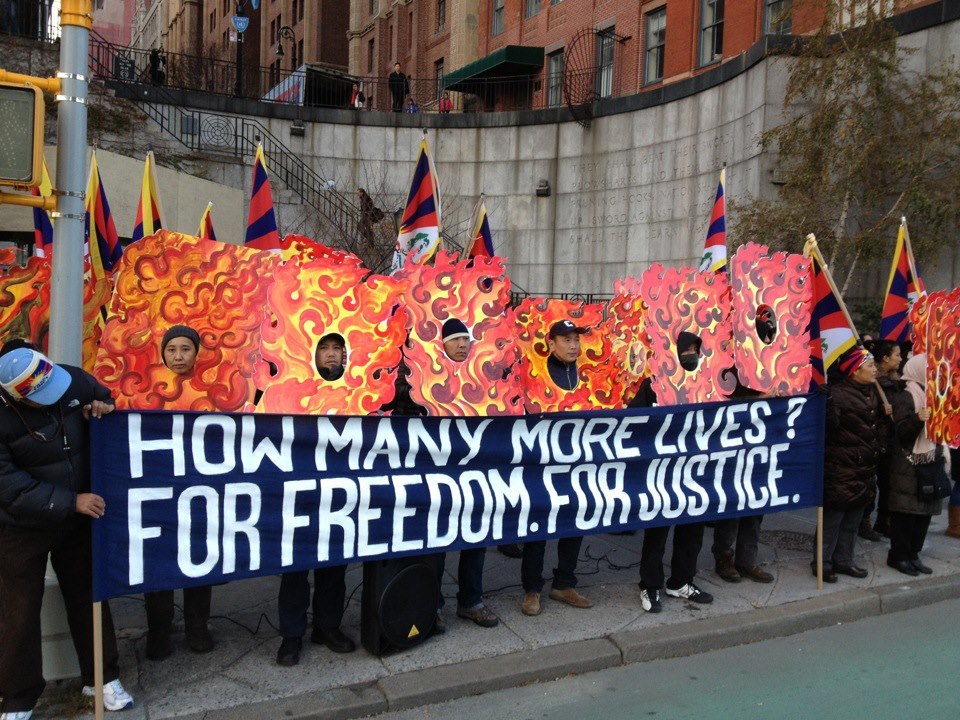
Religious life in Tibet is now completely controlled by the state. It governs all aspects of religion, both in the public and private spheres. Given the importance of Buddhism in the lives of Tibetans, this policy is perceived by many as a direct threat to their national identity. Some describe the current crackdown as no less egregious than during the dark years of the Cultural Revolution.
The US Commission on International Religious Freedom has classified China as a "country of particular concern" since 1999, ranking it among the world's most notorious violators of religious freedom. According to the Commission's 2013 report: "Religious freedoms in areas of China where Tibetan Buddhism is practiced are now worse than at any time in the last ten years." [Annual Report 2013, US Commission on International Religious Freedom]. The current policy demonstrates the desire of the Chinese government to take full control of Tibetan Buddhism. As a consequence of the application of such a policy towards Tibet, the religious institutions and traditions that for centuries have supported the continuous transmission of the teachings of Tibetan Buddhism are being systematically destroyed.
The slogan in front of the UN building: "How many more lives must be given in the name of freedom and justice?"
The rapid economic development of the PRC does not translate into respect, protection and implementation of the economic, social and cultural rights of the Tibetans.

Many Tibetans face discrimination when they try to exercise their right to work, which threatens their economic survival. Massive forced evictions and resettlements continue to occur in Tibet, destroying the traditional nomadic way of life and reinforcing the Chinese policy of control over the Tibetan population.
The right to a full standard of living is constantly violated: mining in Tibet pollutes rivers and drinking water sources for the local population, threatening the right to water. The discrepancies in maternal and child mortality statistics between the provinces of the PRC and Tibet, as well as the lack of health facilities in the Tibetan regions, indicate a serious violation of the right to health of the Tibetan population.
The Tibetan language and cultural heritage is on the verge of destruction due to the PRC's policy of oppressing the Tibetan language and the urbanization of historical sites such as the Old City in Lhasa.
Ugly development of Lhasa's historic district with model houses for Chinese settlers
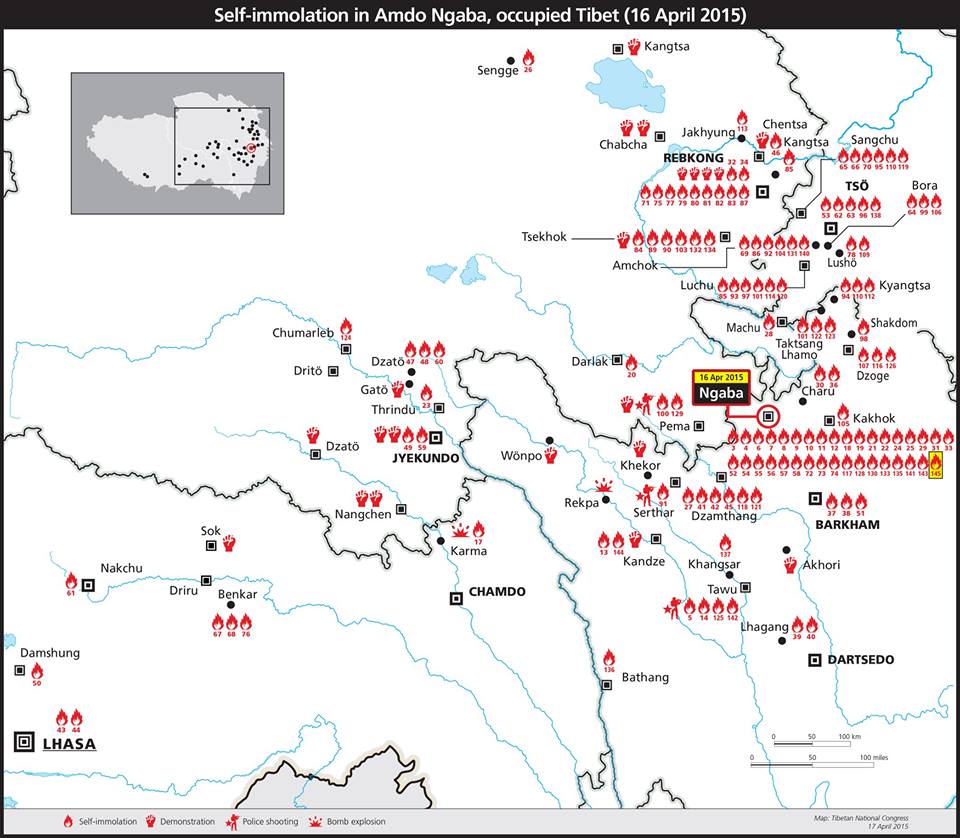
Despite the small number of Tibetans and the low population density in Tibet, the Chinese limit the number of children that Tibetan women are allowed to give birth, although these restrictions are not as severe as for Chinese women. These restrictions, which vary from region to region, are supported by forced abortions and sterilizations carried out in violation of declared rights and freedoms and very often to the detriment of women's health. Children born “without permission” are often discriminated against in school entry and distribution of wealth.
And it is worth paying special attention to the practice of self-immolation in Tibet as the highest form of protest against existing conditions. Not a single country in the modern world had and does not have analogues of such an expression of will among civilians. To date (since 2009), the total number of Buddhist monks, laymen, women and teenagers who have put themselves on fire, shouting last-minute calls for liberation from Chinese dependence and the return of the Dalai Lama to their homeland, has reached 145 (123 men and 23 women , 138 in occupied Tibet and 7 in India and Nepal)
Widespread coverage by Western media has established the practice as a type of political protest against the occupation and oppressive regime of the Chinese government.
Map of self-immolations in Amdo region, Tibet
Until the invasion of the PRC in 1950, Tibet was an independent country in fact and in law. During this period, it enjoyed the trappings of real and formal independence and statehood, despite significant foreign interference at certain periods of time. According to international law, the continuity of the state has never been violated here. Otherwise, for example, Bhutan, Czechoslovakia, the GDR and the MPR could not be considered independent states. In 1950, Tibet was less connected to China than the Netherlands was to Spain or France, whose rulers had proclaimed their authority over them in past centuries.
But there was one circumstance that experts in international law refer to when trying to justify China's territorial claims to Tibet. In the period after the fall of the Qing and before the occupation by China, there was no clear international recognition of Tibet as an independent country. Tibet did not conclude significant treaties and international agreements during this period.
But in 1949, Tibet was recognized by Nepal when the latter applied for membership in the UN. In particular, he included Tibet in the six countries with which he entered into diplomatic relations. Nepal maintained these relations with Tibet, being an independent state, and not part of another state or colony.
But it is worth emphasizing that international recognition or non-recognition does not affect the existence of a new state, so the example of Nepal is only additional evidence of the statehood of Tibet.
The Paris Pact of 1928, to which China has joined, forbids war as a means of resolving international conflicts and as an instrument of national policy. Such a war, under international law, is a war crime.. The PRC authorities have consistently condemned aggressive wars and the threat of the use of force. According to paragraph 4 of Art. 2 ch. 1 of the UN Charter, "All Members of the UN shall refrain in their international relations from the threat or use of force against the territorial integrity or political independence of any State, or in any other manner inconsistent with the purposes of the United Nations." The charter came into force on October 24, 1945, that is, before the PRC's invasion of Tibet.
This invasion is contrary to international law, violating the principles of state sovereignty, independence, territorial integrity, the prohibition of intervention and the threat of force. It contradicts the spirit and letter of the article of the Versailles Treaty establishing the League of Nations, the Paris Peace Pact (Briand-Kellogg Pact), the UN Charter and other agreements to which the PRC is a party.
Flag of Free Tibet
In addition, the invasion of Tibet is act of aggression according to Art. 2(2) of the 1933 Convention on the Definition of Aggression and a crime against peace under Articles 6a and 5 of the Charters of the Nuremberg and Tokyo International Military Tribunals, respectively. China was among the 11 allies that created the Tokyo Tribunal.
So, “PRC could not obtain a legal right to sovereignty over Tibet on the basis of a military invasion or subsequent measures of effective control. The overwhelming majority of the people's continued support for the Dalai Lama, the active resistance to Chinese rule in Tibet, the successful development of the Tibetan society in exile, the functioning of the government in exile - all these are factors that speak of the continuity of the Tibetan state. On the other hand, in view of the illegality of the Chinese invasion of Tibet and the invalidity of the 17-Point Agreement, neither the level of Chinese control by maintaining a strong military presence in Tibet nor the length of time since the invasion is sufficient to conclude that China legally acquired the entire territory of Tibet. .

To date, nothing has happened that, according to generally recognized norms of international law, could justify the conclusion that the Tibetan state has completely died out and is legally incorporated into the PRC as an integral part of it.
The State of Tibet continues to exist... as an independent legal entity, with a legitimate government in exile in Dharamsala representing it. Accordingly, this government and the people of Tibet have the right to regain the exercise of sovereignty over their own territory, free from interference by other states.”
But explaining boundaries in this way is a thankless task. Until now, two mutually exclusive principles operate in international practice: the self-determination of peoples and the territorial integrity of states.
Demonstration of Tibetan monks and laity
They are applied in accordance with political expediency. In 1961, the UN General Assembly adopted Resolution 1723 (XVI), which openly recognized the right of the Tibetan people to self-determination. The UN called on the PRC to stop "policies that are aimed at depriving the Tibetan people of their fundamental rights and freedoms, including the right to self-determination." Four years later, in 1965, she specifically reaffirmed this resolution (See Res. 2079(XX)).But this solution is ignored.
In the 1990s, unrelated meetings of experts in international law took place to consider Tibet's claim for independence.
The Permanent Tribunal of the Peoples, which met in November 1992 in Strasbourg, examined many testimonies and arguments for a week and came to the conclusion that Tibetans meet the generally accepted legal concept of "people" and therefore have the right to self-determination". The Tribunal concluded that "the present Chinese administration in Tibet must be regarded as foreign domination over the Tibetan people." At the end of the verdict adopted by the Tribunal, it is written: “ The Tibetan people have been deprived of their legitimate right to self-determination since 1950.”
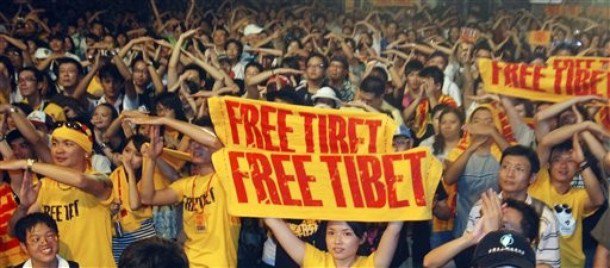
At another independent conference, held in London a few weeks later for 4 days, thirty well-known specialists in international law from Europe, Africa, Asia, North and South America, among whom were the largest authorities on the right of peoples to self-determination, having thoroughly considered all materials, including the Chinese White Paper, made a written statement:
1) According to international law, the Tibetan people must gain independence; the right to self-determination "belongs to the Tibetan people" and "neither the Chinese government nor any other nation or state has the right to deprive them of their independence."
Massive demands to liberate Tibet
2) “Since the military operations of 1949-50. Tibet is occupied by the PRC and arbitrarily ruled by the colonial administration.”
3) "Given the long history of Tibet as an independent state, we believe that the Tibetan people's demand for self-determination, including independence, is consistent with the principles of national unity and the territorial integrity of the state."
If the USSR was legitimate and its borders were recognized, then why did some countries not recognize the entry of the three Baltic republics into it? By the way, until the twentieth century. two of them did not have statehood. Why do the same countries recognize the entry into China of Tibet, which had a centuries-old statehood? Why is the separation of independent states from the empires of the West and the East (Spanish, British, Portuguese, French, Ottoman, etc.) legitimate, but not from the Qing? Why was the revolutionary collapse of Austria-Hungary or the USSR legitimate, while the integrity of China within the borders of the Qing Empire was indisputable? Why can Kosovo or South Ossetia be recognized, but not Tibet?
Rhetorical questions can be continued. There will be only one answer: because from time immemorial the main right in international relations is the “right of the strong”. International norms are used only to harmonize the interests of the powers. If a weak continental country does not have strong patrons, then sooner or later it will lose its independence from its neighbors. Natural barriers, so useful in the past, do not provide protection in our time. The fate of Tibet is one example of this.
Tibet is integrating into China, which has never asked the Tibetan people if they want it, if they want democracy, modernization, changes in the social order and their culture. The course of history has shown that he does not want to. Therefore, the policy of the CCP has always ruled out such an expression of will. The CCP leadership does not want any compromise on the Tibetan issue. What for? It already reigns supreme in Tibet. Nothing threatens the “integrity” of the PRC, the “international community” has long resigned itself to the status quo and, for the sake of economic benefits, does not even discuss the legitimacy of this.
